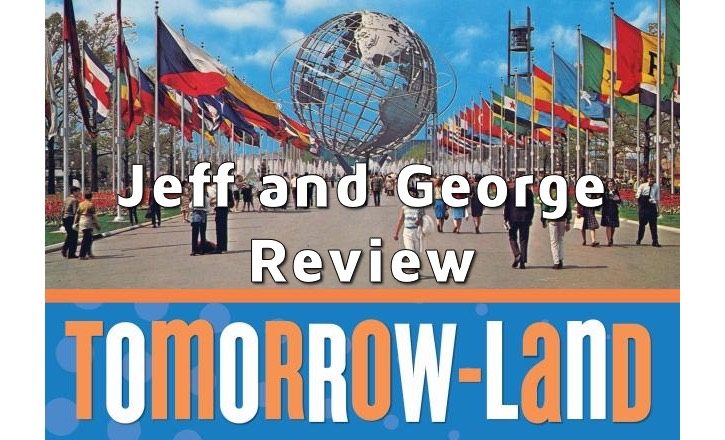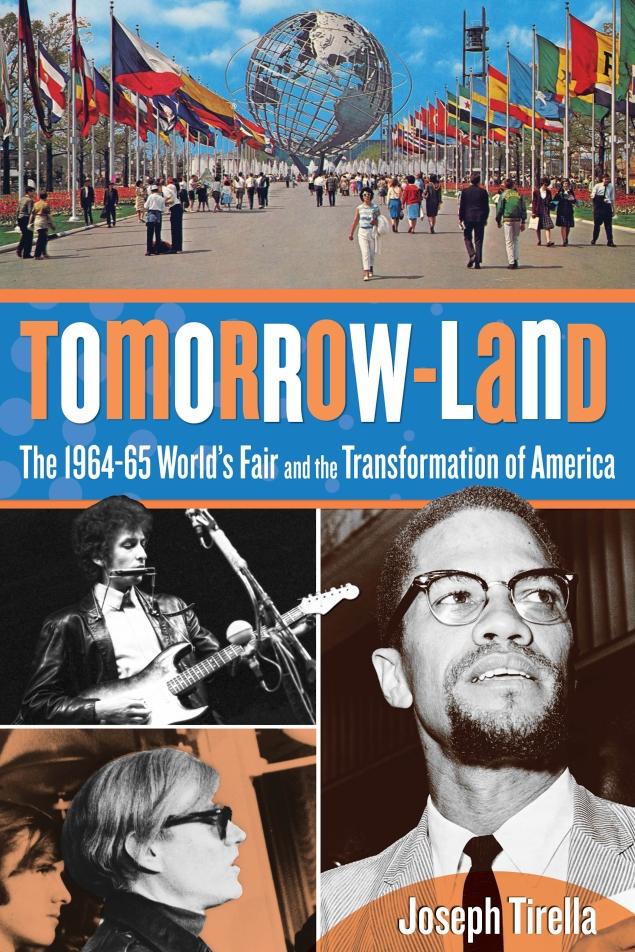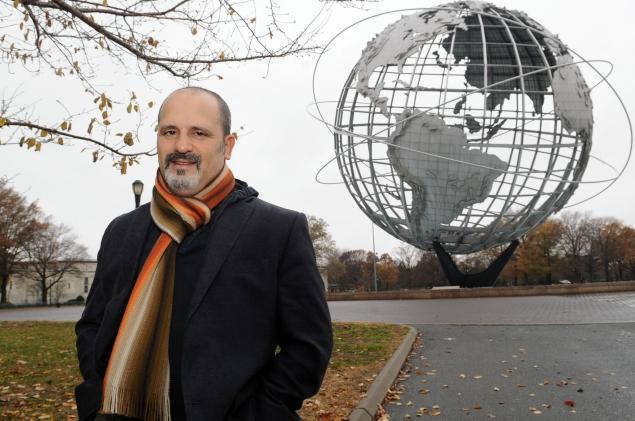Tomorrow-land: the 1964-1964 New York World’s Fair and the Transformation of America by Joseph Tirella, a book review
George: 2014 marked the 50th anniversary of the 1964-1965 New York World’s Fair. This was monumental for several reasons, including the publication of several new books about the Fair. Tomorrow-land: The 1964-1965 World’s Fair and the Transformation of America by Joseph Tirella was one of those titles and takes quite a different look at the 1964 World’s Fair. Tirella takes us on a journey of the transformation that took place before, during and after the Fair and how America was never quite the same.
Jeff: We’re both HUGE Fair junkies, and 2014 was a treasure trove of goodies for the 50th Anniversary. I firmly believe that this book, Tomorrow-land, was a fantastic start of that. And quite honestly, anything else that came out that year had a hard time topping this. I have to admit that the book was nothing at all what I expected it to be, and trust me when I say that that is by no means a bad thing. In fact, it exceeded all sorts of expectations that I didn’t even know I had.
George: For starters, this Tomorrow-land is not a run down of all the different pavilions and spaces that made up the fair. Tirella does discuss a lot of the pavilions, but they’re all in the context of the book; we learn about the socio-politcal issues with the pavilions as opposed to a travelogue. The real star of the book, as expected, is Robert Moses. Moses was oft-referred as the Master Builder (yes, with capital letters) because of his long and storied career as a public servant in New York City. Moses held many jobs throughout his career (like Parks Commissioner) and was responsible for re-shaping New York City by building major expressways (often at the detriment of ethnic neighborhoods and enclaves). Moses polarizing image shines, especially in light of the other major discussions that Tirella brings forth.
Jeff: This has got to be one of the most in-depth looks at Moses during the period of the Fair ever presented. I thought I had known a lot about the man before, but Tirella pulls back the curtain even further, to see even more of the inner workings of his brain. There were a few points that surprised me, such as what an incredible micro-manager he was, and yet, was quite hands-off on some issues that could cause international issues (such as two “warring” pavilions). But like mentioned earlier, it would be unfair for us to say that the book just looks at the World’s Fair in a piece by piece fashion. It goes well beyond that.
George: Where Tomorrow-land starts to veer into new territory, so to speak, is when Tirella starts to look at the events that surround the Fair. Not just geographically, but sociologically. Tirella dissect the landscape of the mid-1960s to give us an overview of the political, musical, religious and cultural upheaval that was taking place. Some of it spurned on by the Fair and some of it just a sign of the times. Regardless, Tirella doesn’t shy away from looking fairly deeply at the issues. I think we both agree that the book is eye-opening.
Jeff: Absolutely. He dissects the civil rights movement and relates it to how it was affecting the fair in a way I didn’t even realize. It was really fascinating. On top of that, this time was the height of Beatlemania and the folk music movement, so he weaves both Bob Dylan and The Beatles into the story flawlessly. It is really quite amazing to learn how one thing, no matter how inconsequential, could go on to change the way the Fair would be. It was pretty great to see all the backstage political workings in New York City at the time, and what Moses did to really get the Fair up and running.
George: I know that everyone’s waiting to see the Walt Disney connection since the Fair was crucial to the building of Walt Disney World as well as the advancement of Audio-Animatronics. Walt is mentioned a few times early in the book. Tirella talks about Moses trying to get Disney to take over the amusement area but Disney quickly (and rightly) discerned that it was a poor set-up. Tirella also notes that Disney and Moses were mutual admirers and worked in similar ways. I would like to have seen more coverage of Disney in the book, especially the effect of some of the most popular attractions at the Fair, but the focus really is on the social forces at play. When I read the notes, I was disappointed to see that Tirella used Neal Gabler’s horrific Walt Disney: the Triumph of the American Imagination. Granted, Gabler’s book is the most current and did get a lot of press. Not a slam against Tirella or his fantastic book; I just can’t stand Gabler’s book.
Jeff: Overall, though, for serious 64/65 World’s Fair scholars, this book is an invaluable research tool to help gain some fantastic insight into the Fair and the time period. Even if you’re just a casual reader, I still think you’ll be enthralled by the information packed into this book. The year is young, but this is definitely one of the best books I’ve read on the Fair so far.





While reading the book, it’s noticeable that Tirella is a magazine writer. The chapters tend to repeat material, as though each chapter was written as an independent article.